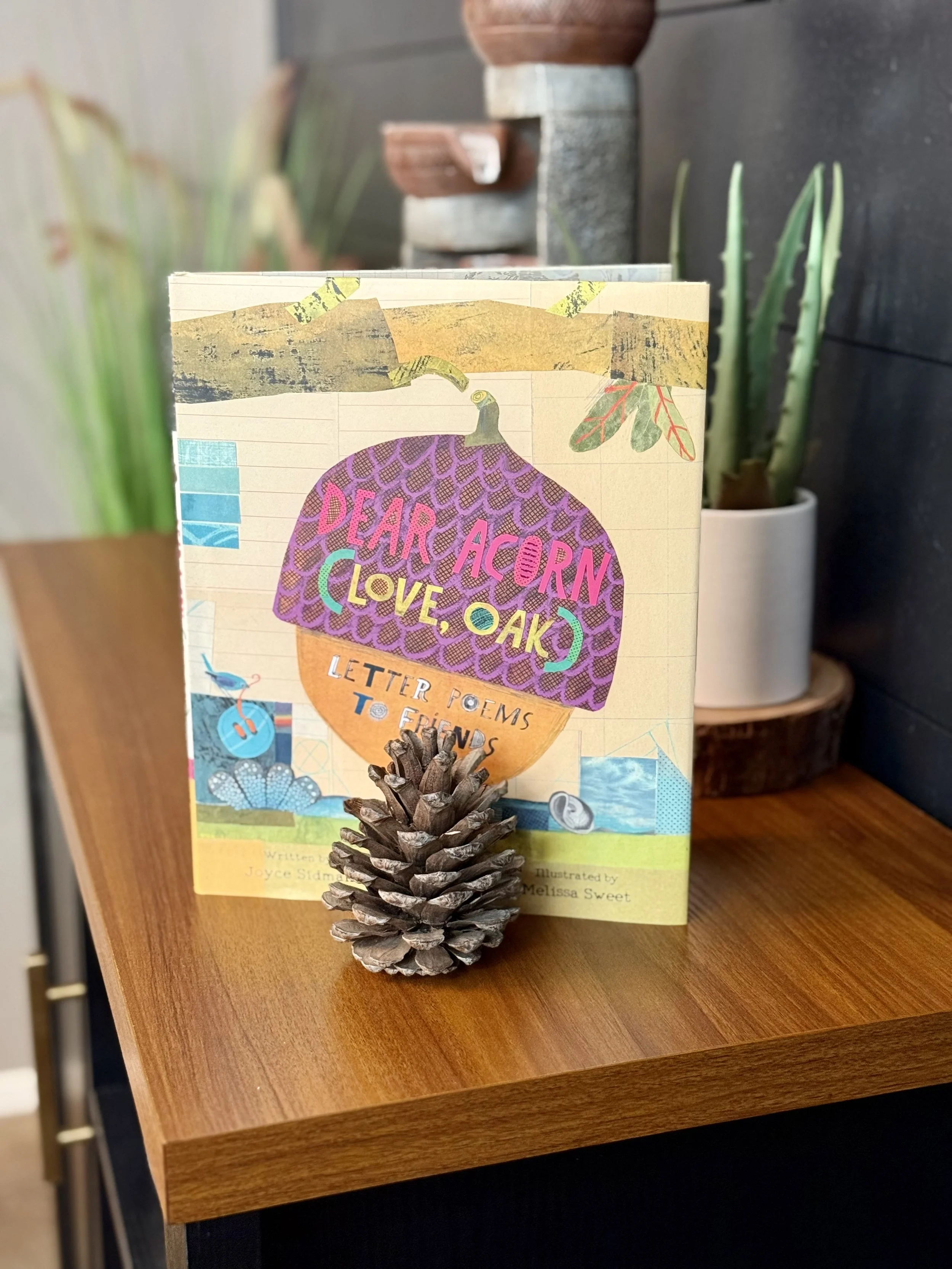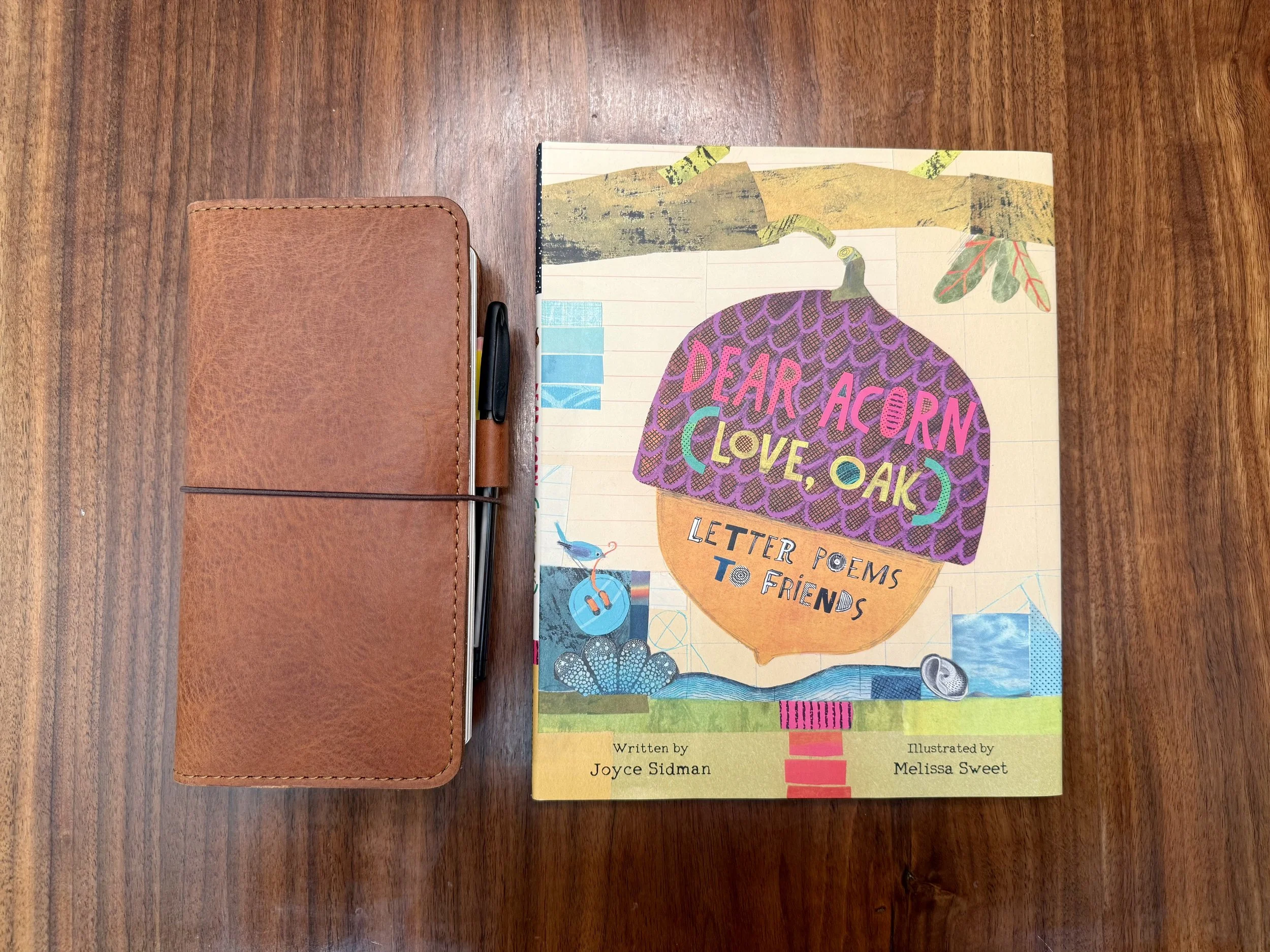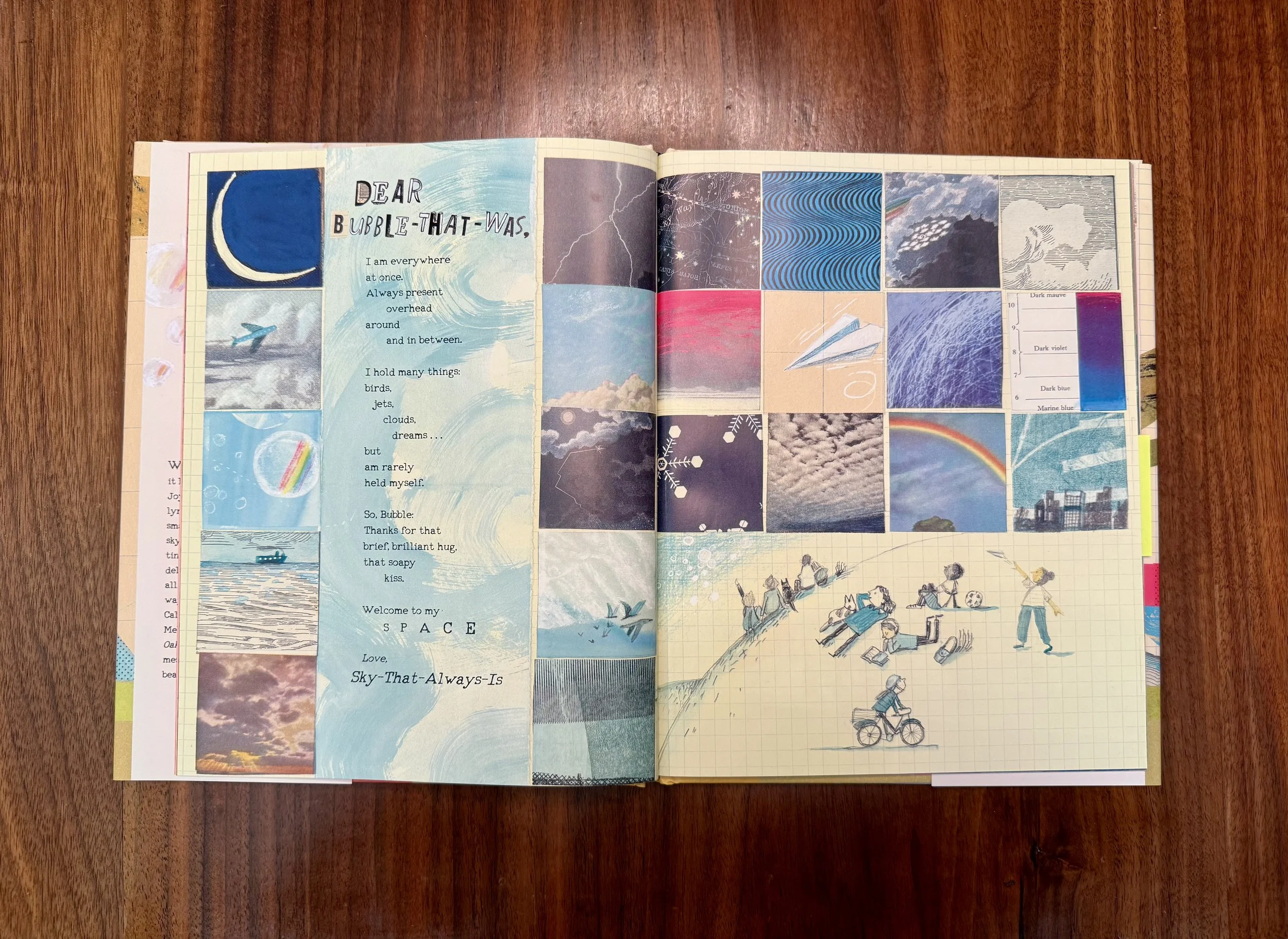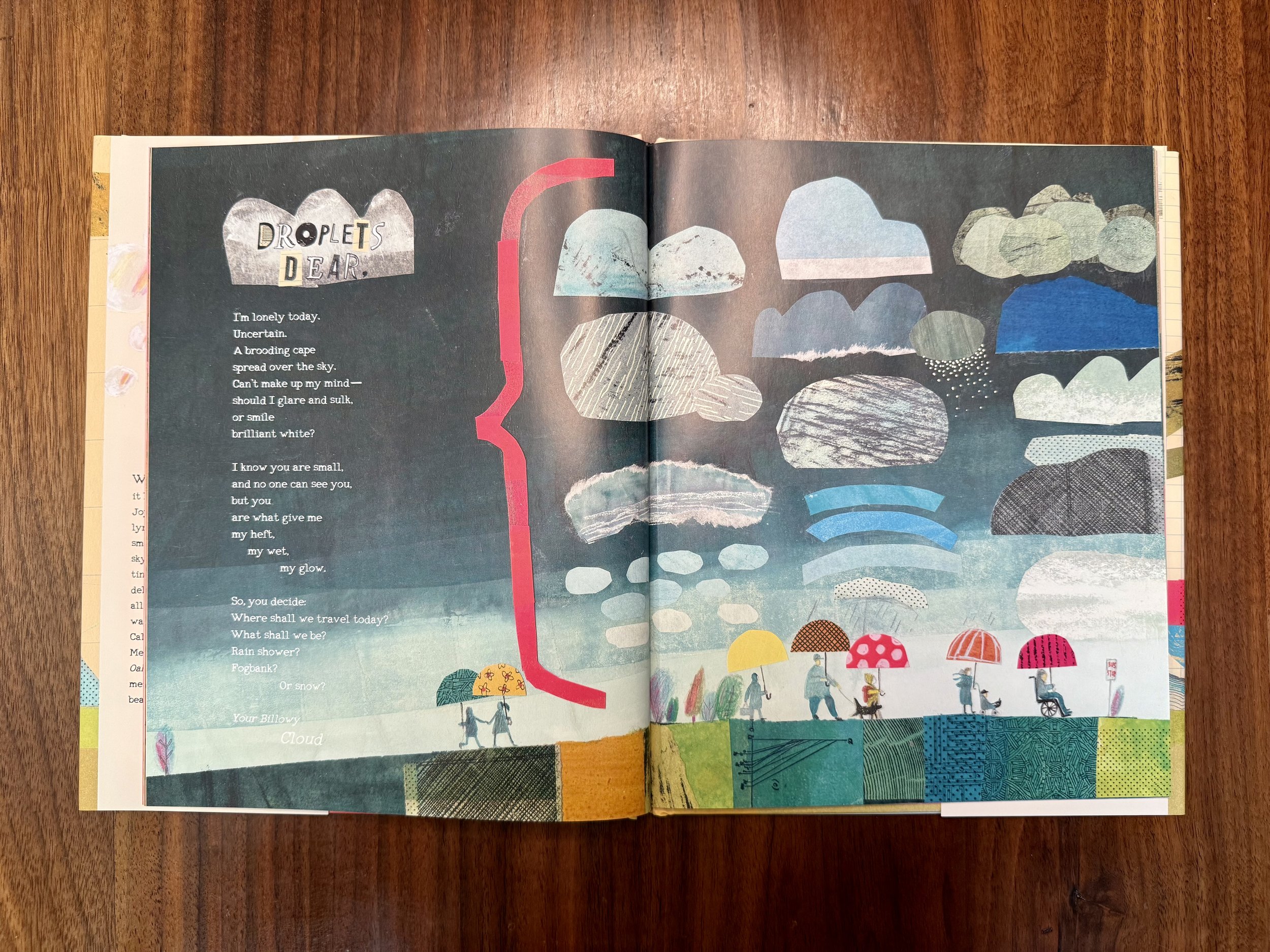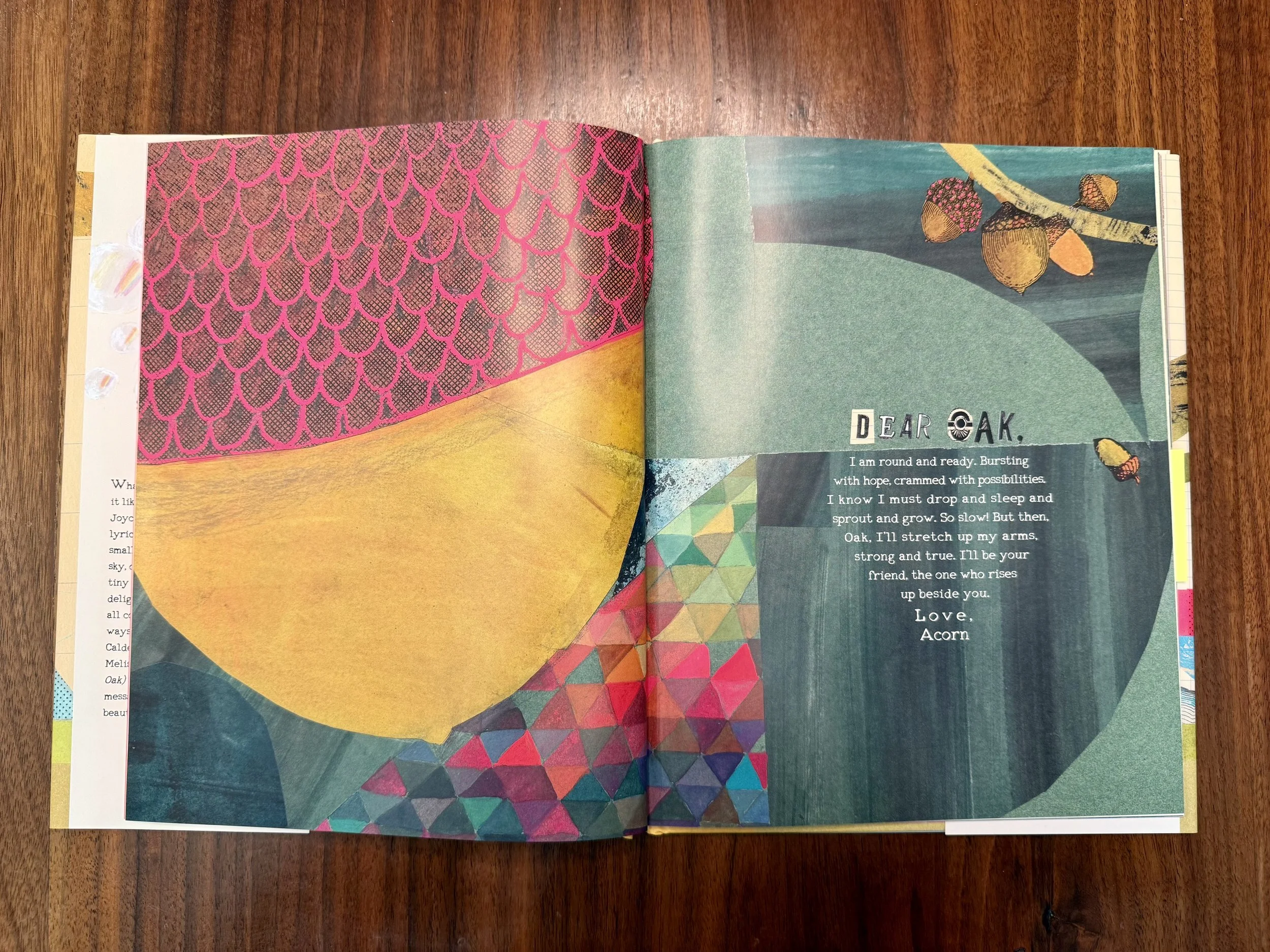Dear Acorn (Love, Oak): Journaling Through Connection and Growth
Disclosure: Writing Mindset only endorses things that I’ve personally used, something similar, or come highly recommended by trusted peers. If you grab anything I mention using a referral link, I may get a small commission. However, there’s no extra cost to you. If you would like to learn more, please visit the privacy policy and disclosure page.
Joyce Sidman and Melissa Sweet’s Dear Acorn (Love, Oak) is a gentle and poetic exploration of connection, patience, and transformation. Told through a series of tender letters from an old oak tree to a newly fallen acorn, this picture book beautifully captures the rhythm of life cycles—growth, waiting, change, and renewal. Through Sidman’s lyrical language and Sweet’s rich mixed-media illustrations, readers are invited to consider how all things in nature are intertwined. On the blog, I have been a huge fan of the illustrations from Melissa Sweet. How to Write a Poem by Kwame Alexander and How to Read a Book by Kwame Alexander are two of the first picture books I recommend to teachers to lead conversations about reading and writing in their classrooms at any level.
For writers and journalers alike, Dear Acorn is an invitation to reflect on relationships, resilience, and the quiet passage of time. It reminds us that even the smallest beginnings hold the promise of something enduring and strong. In Dear Acorn the lost art of letter writing can help writers tap into new ideas and people working in a journal to access different parts of the world around them.
In this post, you can find…
Tips for using this book as a mentor text for writing
Ways to use the book with preschoolers, grades k-5, grades 6-8, grades 9-12, and for disciplinary literacy projects
Journaling prompts linked to the book (including nature journaling)
One grammar exercise to access grammar instruction
Using Dear Acorn as a Mentor Text
This mentor text was selected for its strong use of metaphor and natural imagery, showing how writers can convey growth, change, and the passage of time through simple yet powerful objects. The interplay of text and illustrations provides an excellent example of how words and visuals can work together to tell a story, making it a model for both narrative and poetic writing for early literacy learners.
When reading Sidman’s book, notice how she:
Uses letter form to tell a story – Each page is written as a note, full of tenderness and observation.
Blends science and poetry – The text captures real details of growth while maintaining lyrical beauty.
Builds connection between generations – The oak’s voice models wisdom, patience, and care.
Celebrates time and transformation – Change is slow, but full of purpose and meaning.
As a mentor text, Dear Acorn teaches us how to write with heart and perspective. What happens when we give voice to something that grows, changes, or waits?
Journaling Prompt: “A Letter to My Younger Self”
Open your journal and begin by writing a short, heartfelt letter. You can choose one of the following perspectives:
From your current self to your younger self
From your future self to the present you
From something enduring (like a tree, a river, or a mountain) to something just beginning (like a seed, a raindrop, or a sunrise)
Try to mirror Sidman’s tone—gentle, wise, and hopeful.
Sample openings:
Dear Me, the one who was just beginning…
Dear Seedling, you do not yet know how tall you’ll grow.
Dear Younger Self, your roots are finding their way—be patient.
This exercise encourages gratitude, self-compassion, and reflection on growth over time.
Why This Works
Letter writing is a form of connection. When we write from one version of ourselves to another—or from one element of nature to another—we practice empathy and perspective. Dear Acorn reminds us that growth takes time and that wisdom often comes from slowing down enough to notice our place in the larger cycle of life.
👉 Try it today: Write your own letter titled “Dear Acorn”—and let it become a meditation on patience, possibility, and becoming.
In my own writing, I really wanted to focus on one natural element (mountains) and then pair this with a mentor text from Morgan Harper Nichols:
Pace yourself
through these mountains,
travel gently
toward higher ground
the air is different up here,
and your courage
is finding its rhythm.
It’s terrifying
and beautiful
journeying beyond
who you thought
you had to be…
but perhaps
it is still not too late
to meet the aliveness
you had stopped expecting.
-Morgan Harper Nichols
Based on the this, another step I took that really helped me with this is creating a word bank of mountain-related terms. On my list I had: peak, summit, steep, ridge, slope, topography, geology, terrain. This word bank can be a huge help for young writers when they get stuck. Here are some of my favorite lines from my own notebook:
Looking into my own geology,
landforms are sometimes
built in my mind
pushed up by plates before me.
the height of these mountains
creates patterns in my own weather,
my self,
my habits,
my being.
Foolish to think that peaks exist,
only terrain that is navigated by
radical self-acceptance,
kindness,
love.
And if I do anything, I teach her that she is in charge of not moving mountains,
but forecasting her own weather.
For Educators: Bringing Dear Acorn into the Classroom
Preschool Literacy Connections
Preschool readers love the warmth of the letter format. After reading, discuss how Dear Acorn shows friendship and care between the oak and the acorn.
Have children draw an acorn and dictate a simple letter to it: “Dear Acorn, I hope you grow big!”
Explore nature vocabulary: roots, leaves, seed, grow.
Connect the story to a planting activity—let each student plant a seed and “write” a letter to it over time.
Grades K–5
This book provides a wonderful bridge between literacy and science.
Discuss how trees grow and how acorns become oaks.
Have students write short letters from one natural object to another (e.g., Dear Sun, Thank you for helping me grow.).
Incorporate simple metaphors: My roots are strong like friendship.
Create a class “Letters from Nature” wall, blending writing, art, and environmental awareness.
Grades 6–8
Middle schoolers can explore voice, perspective, and growth through this text.
Begin with a reflection: “Something I’ve learned with time is…”
Move into a letter: “Dear younger me…” or “Dear person I hope to become…”
Focus on tone—how does the oak sound patient, loving, and wise?
Encourage revision by highlighting figurative language and sensory details.
This lesson blends ELA standards, SEL, and mindfulness, helping students connect writing with empathy and self-awareness.
Grades 9–12
For older students, Dear Acorn can open conversations about legacy, change, and resilience.
Pair with texts like Mary Oliver’s “The Summer Day” or Ross Gay’s “To the Fig Tree on 9th and Christian.”
Have students write letters to something that represents growth—perhaps their art, a belief, or a place that shaped them.
Encourage experimentation with form—letters, journal entries, or prose poetry.
Discuss Sidman’s use of structure and emotional restraint, connecting it to tone and purpose in their own writing.
Disciplinary Literacy Connections
Dear Acorn connects effortlessly across content areas:
Science: Explore plant life cycles or ecosystems, then write from the perspective of a seed or organism.
Social Studies: Discuss how time and heritage shape identity; write a letter from a historical landmark to future generations.
Art: Create mixed-media tree rings representing personal growth over the years.
Math: Write metaphorical “letters” about growth patterns—“Dear Ratio, you help me measure what’s expanding.”
Each activity reinforces the idea that writing is a tool for understanding—not just expression.
Grammar Focus: Sentence-Level Craft
Skill Focus: Compound Sentences with Coordinating Conjunctions
Sidman’s sentences often balance two related ideas—growth and patience, change and stillness. While the sentences in the book don’t necessarily follow a simple-compound setup, you can still use these concepts to teach the skill with coordinating conjunctions. Teach how and, but, and yet create rhythm and contrast.
The acorn sleeps, but the tree remembers.
I was small, and the world was wide.
Nature Journaling Connection
This book was made for nature journaling. Take students (or yourself) outside to observe trees, leaves, and seeds. Encourage writing from two perspectives—the observer and the observed.
I am the oak, steady and sure.
I am the acorn, dreaming of sky.
Add sketches, leaf rubbings, or pressed items. Nature journaling through letters fosters gratitude and curiosity about our place in the ecosystem.
Additional Journal Prompts for Wellness
Use the reflective spirit of Dear Acorn to guide inner growth:
“What part of my life is growing roots right now?”
“What am I patiently waiting to see bloom?”
“If I could write a thank-you letter to time, what would I say?”
“What lessons have I learned from slowing down?”
Final Thought:
Dear Acorn (Love, Oak) reminds us that growth is both silent and profound. Whether through letters, journals, or classroom discussions, this story invites us to reflect on connection, patience, and what it means to nurture something over time. Every acorn holds a future oak; every word we write can take root and grow into something lasting.


